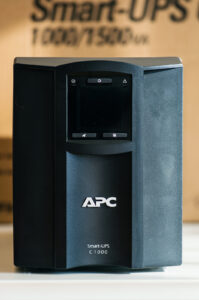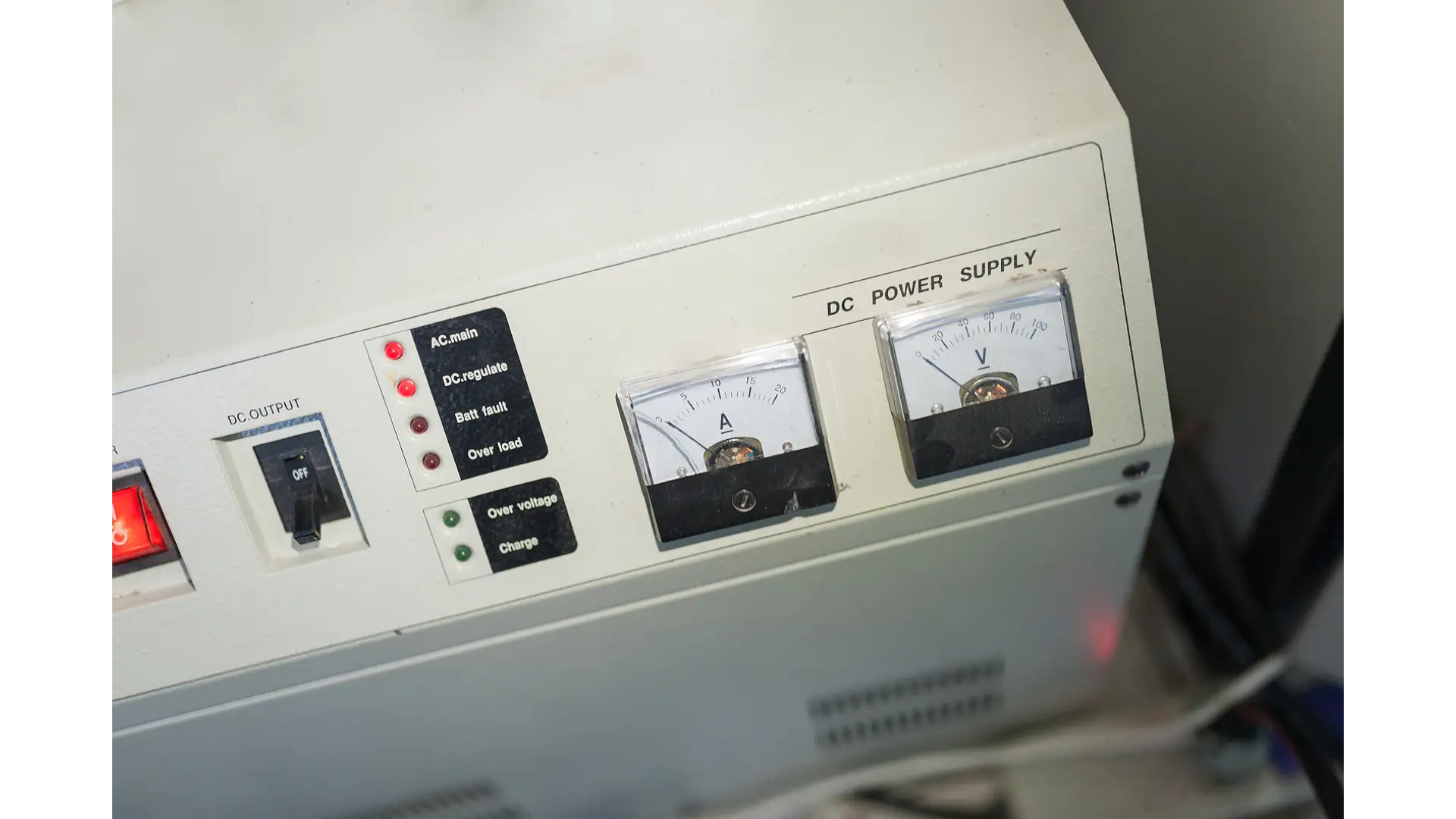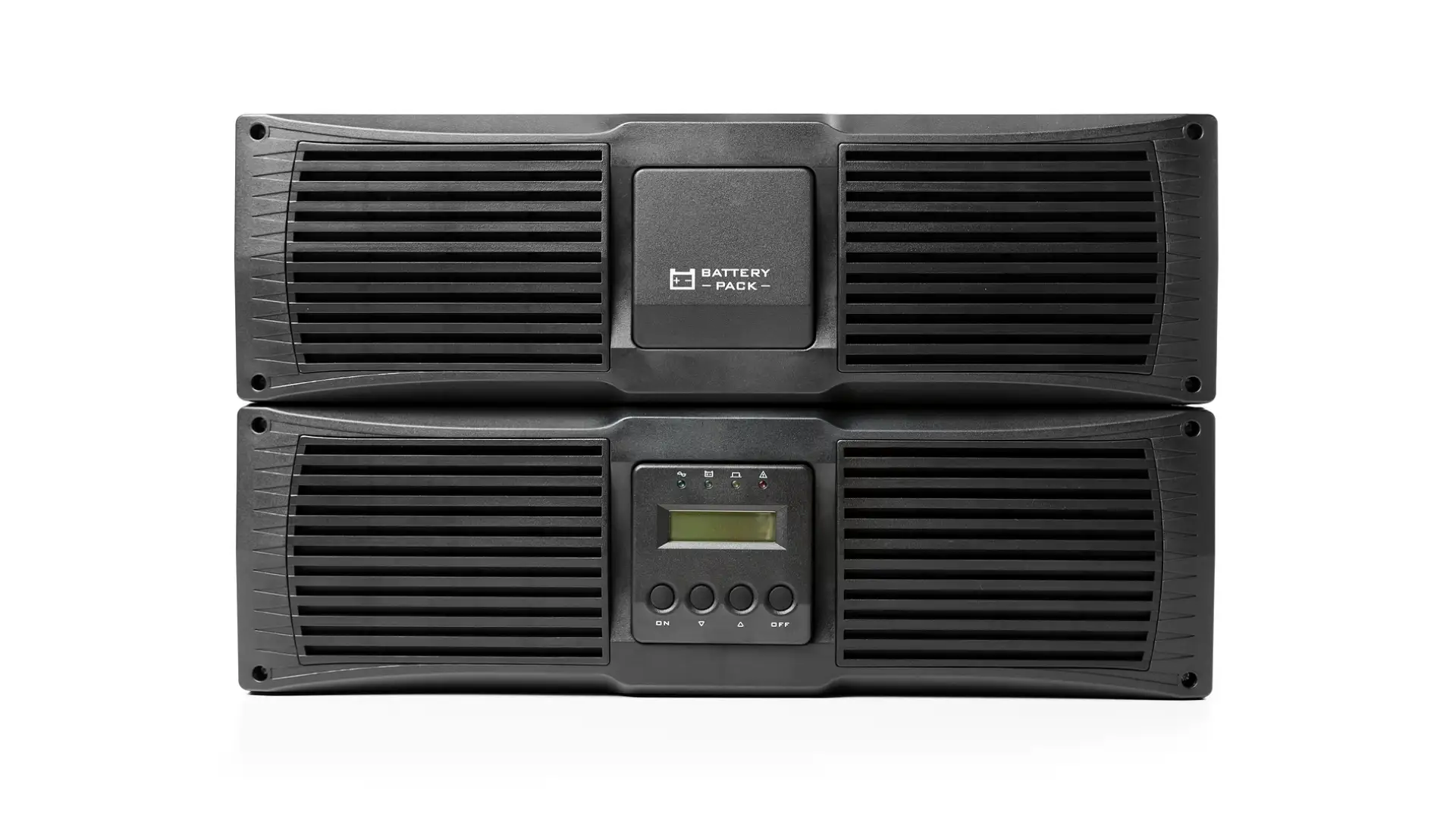
APC Flywheel Ups
In today's fast-paced digital world, I can't stress enough how essential it is to have a reliable power backup solution. We've all experienced the frustration of sudden power outages or those annoying voltage fluctuations that can wreak havoc on our electronic devices and productivity. That's where APC Flywheel UPS (Uninterruptible Power Supply) systems step in to save the day.
In this comprehensive guide, I'll take you on a journey to discover everything you need to know about these remarkable devices – from how they work to the incredible benefits they offer, their practical applications, and more. By the end of this article, you'll gain a personal understanding of how APC Flywheel UPS systems can be your ultimate safeguard against critical system failures. Let's dive in!
What is an APC Flywheel UPS?
Imagine having a cutting-edge APC Flywheel UPS in your home or workspace. This remarkable device, also known as a Kinetic Energy Storage System, doesn't rely on traditional batteries but instead stores energy as kinetic power in a rapidly spinning flywheel. When your electricity goes out or experiences disruptions, this system seamlessly switches to its stored kinetic energy, providing immediate backup power.
What sets it apart is its incredible efficiency and reliability. Unlike battery-based UPS units that degrade over time, the Flywheel UPS has a longer lifespan. Plus, it responds lightning-fast without the need for battery charging, making it perfect for situations where uninterrupted power is crucial, such as in my home office or during important work projects.
In a world where we rely so heavily on electronic devices, having an APC Flywheel UPS gives me peace of mind, knowing that my equipment and data are protected from unexpected power outages. It's not just a backup power source; it's an ingenious solution that ensures I can keep working, stay connected, and avoid any costly downtime.
How Does an APC Flywheel UPS Work?
An APC Flywheel UPS operates based on the innovative principle of kinetic energy storage, offering a reliable solution for backup power. Here's a detailed look at how these systems work:
- Kinetic Energy Storage: The central element of a Flywheel UPS is a high-speed flywheel crafted from lightweight, robust materials like carbon fiber or steel. This flywheel is precisely mounted on top-quality bearings and enclosed within a vacuum chamber to minimize air resistance.
- Energy Conversion: When the electrical grid functions normally, the Flywheel UPS draws power from the mains supply and converts it into kinetic energy. This is accomplished by rapidly accelerating the flywheel, which can spin at incredibly high speeds, ranging from 9,000 to 54,000 revolutions per minute (RPM).
- Backup Power: In the event of a power outage or voltage fluctuation, the kinetic energy stored in the spinning flywheel becomes a valuable asset. An electric generator is used to convert this kinetic energy back into electrical energy. This electricity is then seamlessly supplied to critical equipment and systems, ensuring uninterrupted power supply during these crucial moments.
- Short-Term Backup: It's important to note that Flywheel UPS systems are primarily designed for short-duration power interruptions, typically lasting only a few seconds to a few minutes. They serve as a bridge between a power failure and the activation of longer-term power solutions, such as backup generators. This short-term backup capability is particularly beneficial in environments where even brief power interruptions can result in significant disruptions or data loss.
Advantages of APC Flywheel UPS Systems

APC Flywheel UPS systems offer a range of compelling advantages when compared to traditional battery-based UPS systems, making them a standout choice for backup power solutions. Here's a more detailed exploration of these advantages:
Longer Lifespan
Flywheel UPS systems boast an impressive lifespan of typically 20 years or more. This extended longevity significantly reduces the need for frequent battery replacements, resulting in substantial cost savings over the system's lifetime. Businesses and organizations can count on reliable backup power for an extended period.
Reduced Maintenance
The inherent simplicity of Flywheel UPS systems means they have fewer components that can fail compared to their battery counterparts. Consequently, they require minimal maintenance, translating to lower maintenance costs and increased overall system reliability. This reliability is crucial for businesses where downtime is costly.
Faster Recharge
Flywheel UPS systems shine in terms of recovery speed. Once power is restored, they can recharge within seconds. In contrast, battery-based UPS systems often necessitate several hours for a full recharge. This swift turnaround time ensures seamless power restoration during intermittent outages.
Eco-Friendly
Flywheel UPS systems are environmentally friendly because they eschew chemical batteries. As a result, they produce no toxic waste or hazardous materials during operation. This eco-conscious choice contributes to a greener, more sustainable approach to backup power, aligning with corporate sustainability initiatives and reducing environmental impact.
Space Efficiency
Flywheel UPS systems are inherently compact and demand less floor space compared to their battery-based counterparts. This space efficiency is particularly beneficial for businesses and data centers with limited available floor area. It allows for more efficient use of space without compromising backup power capacity.
High Efficiency
Flywheel UPS systems exhibit high energy efficiency, minimizing energy losses during the energy conversion process. This efficiency not only ensures reliable power delivery but also contributes to reduced energy costs over time. Businesses can appreciate both the immediate benefits of uninterrupted power and long-term savings on operational expenses.
Applications of APC Flywheel UPS
APC Flywheel UPS systems have a wide range of applications across various industries and settings due to their reliability and efficiency. Here's a more detailed overview of where these systems are commonly employed:
- Data Centers: Data centers are the backbone of the digital age, requiring uninterrupted power to safeguard against data loss and maintain seamless operations. Flywheel UPS systems are frequently deployed alongside backup generators to ensure a continuous and reliable power supply to critical IT equipment. They act as a crucial buffer during the transition between mains power and generator activation, preventing even the briefest of power disruptions.
- Healthcare Facilities: Hospitals and healthcare facilities demand uninterrupted power to support life-saving equipment, patient care, and critical medical procedures. Flywheel UPS systems play a pivotal role in providing a dependable backup power source, ensuring that critical healthcare systems remain functional during power outages. This reliability is paramount in preserving patient well-being.
- Financial Institutions: Banks and financial institutions cannot afford disruptions in their day-to-day operations, as downtime can result in significant financial losses and erode customer trust. Flywheel UPS systems act as a reliable safeguard, delivering instantaneous backup power to critical financial systems, ensuring uninterrupted transactions and data security.
- Industrial Manufacturing: Industrial manufacturing processes often involve sensitive equipment that can be adversely affected by power fluctuations. Flywheel UPS systems step in to protect machinery and maintain production efficiency by providing consistent and clean power. This ensures that manufacturing operations proceed smoothly without costly interruptions or equipment damage.
- Telecommunications: Telecommunication networks and data transmission facilities rely heavily on continuous power to maintain seamless communication services. Flywheel UPS systems are essential in these environments, ensuring that networks remain operational during power outages, preserving connectivity for businesses and individuals alike.
- Commercial Buildings: In commercial buildings, Flywheel UPS systems can be installed to protect essential systems such as elevators, HVAC (heating, ventilation, and air conditioning), lighting, and security systems. This ensures the safety and comfort of occupants, as well as the uninterrupted operation of businesses located within these structures.
Factors to Consider When Choosing an APC Flywheel UPS
When selecting an APC Flywheel UPS system for your specific needs, consider the following factors:
Load Capacity: Determine the total power load that your UPS system needs to support. Choose a Flywheel UPS with an appropriate capacity to handle your critical equipment.
Runtime Requirements: Assess the duration of backup power you need. Flywheel UPS systems are designed for short-term power backup, so ensure they can bridge the gap until a more permanent power solution is activated.
Redundancy: Consider redundancy options to enhance system reliability. Some Flywheel UPS systems offer parallel configurations for added redundancy.
Space Availability: Evaluate the available space for UPS installation. Flywheel UPS systems are compact, but space constraints may influence your choice.
Maintenance and Support: Look for a reputable manufacturer or supplier that offers maintenance and support services to ensure the long-term reliability of your Flywheel UPS.
Compatibility: Ensure that the Flywheel UPS system you choose is compatible with your existing electrical infrastructure and can seamlessly integrate into your power distribution system.
Cost Analysis: Perform a cost-benefit analysis to determine the total cost of ownership over the expected lifespan of the Flywheel UPS system. Consider factors such as energy savings and reduced maintenance costs.
Installation and Maintenance
Proper installation and regular maintenance are crucial for the optimal performance of an APC Flywheel UPS system. Here are some key installation and maintenance considerations:
- Professional Installation: Always have the Flywheel UPS system installed by qualified technicians who are familiar with the manufacturer's guidelines and local electrical codes.
- Regular Inspections: Conduct routine inspections of the UPS system to check for any signs of wear, damage, or malfunction. Address any issues promptly to avoid potential failures.
- Bearing Maintenance: The high-speed bearings in the flywheel require periodic lubrication and maintenance to ensure smooth operation. Follow the manufacturer's recommendations for bearing maintenance.
- Monitoring and Testing: Implement a monitoring system to continuously track the status and performance of the Flywheel UPS. Regularly test the system to ensure it functions as expected during power outages.
- Battery Backup: While Flywheel UPS systems are known for their reliability, it's a good practice to have a secondary backup solution, such as a generator or battery-based UPS, for longer-duration power outages.
Understanding the Environmental and Efficiency Aspects of APC Flywheel UPS
When considering the adoption of an APC Flywheel UPS, it's essential to take a closer look at its environmental impact, energy efficiency, and cost-effectiveness compared to traditional battery UPS systems.

Carbon Footprint
Using a flywheel as an energy storage device offers several environmental benefits. Firstly, it has a smaller physical footprint compared to battery-based systems. Additionally, it boasts a longer lifespan, reducing the frequency of replacements and the associated environmental impact.
Flywheels have been extensively studied as power storage devices and have demonstrated the ability to absorb short-duration discharges while producing high-power pulses. Some have argued that flywheel UPS systems generate higher carbon emissions than battery-based UPS systems, while others contend that their energy efficiency is comparable. The debate surrounding this topic continues.
However, it's important to note that the difference in the environmental footprint between flywheel and battery-based UPS systems is minimal. The key distinction lies in the energy consumption required to operate the system. Battery-based systems generally demand more energy, exhibit higher standby losses, and necessitate more frequent replacements.
Flywheels, on the other hand, feature a more compact design and are well-suited for applications with substantial energy demands. With a potential lifespan of up to 30 years, they represent an attractive energy storage option for large-scale projects.
In summary, traditional battery-based UPS systems tend to have higher operating costs, require more frequent maintenance, and leave a larger carbon footprint when compared to flywheel UPS systems. The efficiency and extended lifespan of flywheels make them a compelling choice for environmentally conscious businesses and organizations.
Response Time
Utilizing an APC Flywheel UPS can significantly enhance your power backup capabilities, particularly in terms of response time. These systems are designed to operate continuously, spinning around the clock, and ensuring that your backup generator never runs out of power. They are also robust enough to withstand power quality issues, making them an excellent choice for applications requiring more than 50 kilowatts of protection, such as servers and routers.
One noteworthy advantage is the ability to stack flywheel UPS modules in parallel to increase the capacity of your UPS tower. This is a cost-effective means of boosting power backups, guaranteeing a smooth transition during power outages. Moreover, replacement modules are readily available, eliminating the need for extended waiting periods when a new power source is required.
These systems are equipped with advanced battery technology, which is not only more energy-efficient but also boasts a longer lifecycle. The battery cells are charged using a low-voltage method, avoiding the high-voltage hazard associated with conventional UPS systems. While replacements can be carried out overnight, it is advisable to have the UPS inspected by a qualified technician.
One of the primary functions of the flywheel is to provide backup power for critical computer, network, and electronic devices. This makes it an excellent choice for data center needs, reducing disruptions and enhancing productivity during power outages.
Efficiency

Whether you're in the market for a new UPS for your data center or considering an upgrade, the choice of UPS can have a significant impact on both your operational energy consumption and overall cost of ownership. It's essential to take into account the environmental implications of the raw materials used in UPS manufacturing.
Flywheels stand out as an exceptional choice for energy storage. They feature a more compact design than batteries, making them suitable for handling large load requirements and boasting an extended lifespan.
APC's CleanSource Uninterruptible Power Supply (UPS) utilizes a flywheel energy storage system, capable of delivering power in mere seconds. These systems are ideal for applications demanding medium to high power with numerous charge and discharge cycles.
APC, a renowned leader in UPS technology, has been at the forefront of innovation in this field. Founded by Neil Rasmussen in 1981, the company started in solar electricity and ventured into the UPS market in the mid-'80s. Later, it was acquired by Schneider Electric and is now known as APC-MGE.
APC has been collaborating with Schneider Electric on energy-efficient solutions, recognizing the vital role that data centers play in ensuring uninterrupted operations. The primary goal of data centers is to eliminate downtime, and the use of flywheel UPS systems contributes significantly to achieving this objective.
In comparison to battery-based designs, APC flywheel UPS systems exhibit a higher spin-charge loss but can handle larger load capacities and maintain power for longer durations. They are available in multiple module configurations, allowing you to extend your reserve runtime.
Moreover, flywheel-based UPS systems have a significantly lower carbon footprint, which can be determined using the free online Flywheel vs. Battery Carbon Footprint Calculator provided by Schneider Electric.
Requirements
Whether you're in the market for a flywheel UPS, battery UPS, or another type of UPS system, it's crucial to consider a few requirements to ensure your data center operates efficiently and cost-effectively. The power quality and operational energy consumption of a UPS can significantly impact the overall cost of running a data center.
One of the oldest UPS designs, rotary UPS, employs a high-mass spinning flywheel to provide a short-term ride-through in the event of an outage. This buffering capability safeguards against power sags and spikes and is designed to generate very high current output, making it suitable for motor startup and compressor loads.
A flywheel-based UPS offers the advantage of providing clean, stable sine wave output, protecting sensitive electronics vulnerable to alternating currents. It also delivers a lower total cost of ownership (TCO) compared to lead-acid-based systems and boasts a longer lifecycle. While the lifespan of a battery-based UPS is estimated at around 20 years, a flywheel-based UPS can last for decades, making it an excellent choice for larger-scale applications.
The lifespan of a flywheel-based UPS is dependent on its usage, much like other UPS technologies. Some manufacturers claim that flywheel-based systems can be up to seven times more energy-efficient than their battery counterparts.
Flywheel-based UPS systems can be installed as single units or multiple units in parallel, making them ideal for distributed power protection environments.
Conclusion
From my personal perspective, the APC Flywheel UPS is a revolutionary solution in an increasingly digital and demanding world. It offers not just backup power, but peace of mind, efficiency, and sustainability. Its kinetic energy storage system, longevity, and rapid response to power interruptions make it an invaluable asset for businesses and individuals.
The applications of APC Flywheel UPS are diverse and far-reaching, from ensuring uninterrupted data center operations to safeguarding critical healthcare equipment. What sets it apart is its environmental responsibility and cost-effectiveness, aligning with my values of reducing carbon footprints and optimizing operational efficiency. In a world where downtime can be costly and data protection is paramount, the APC Flywheel UPS is a testament to innovation in securing our digital lives.
Sources
https://www.sandia.gov/ess-ssl/publications/SAND2010-0815.pdf
continue reading
Related Posts
Uninterruptible Power Supply APC In today's fast-paced digital world, maintaining […]
Uninterruptible Power Supply Energy Storage Uninterruptible Power Supply Energy Storage […]
Uninterrupted Power Supply for Sale In today’s digital age, where […]



